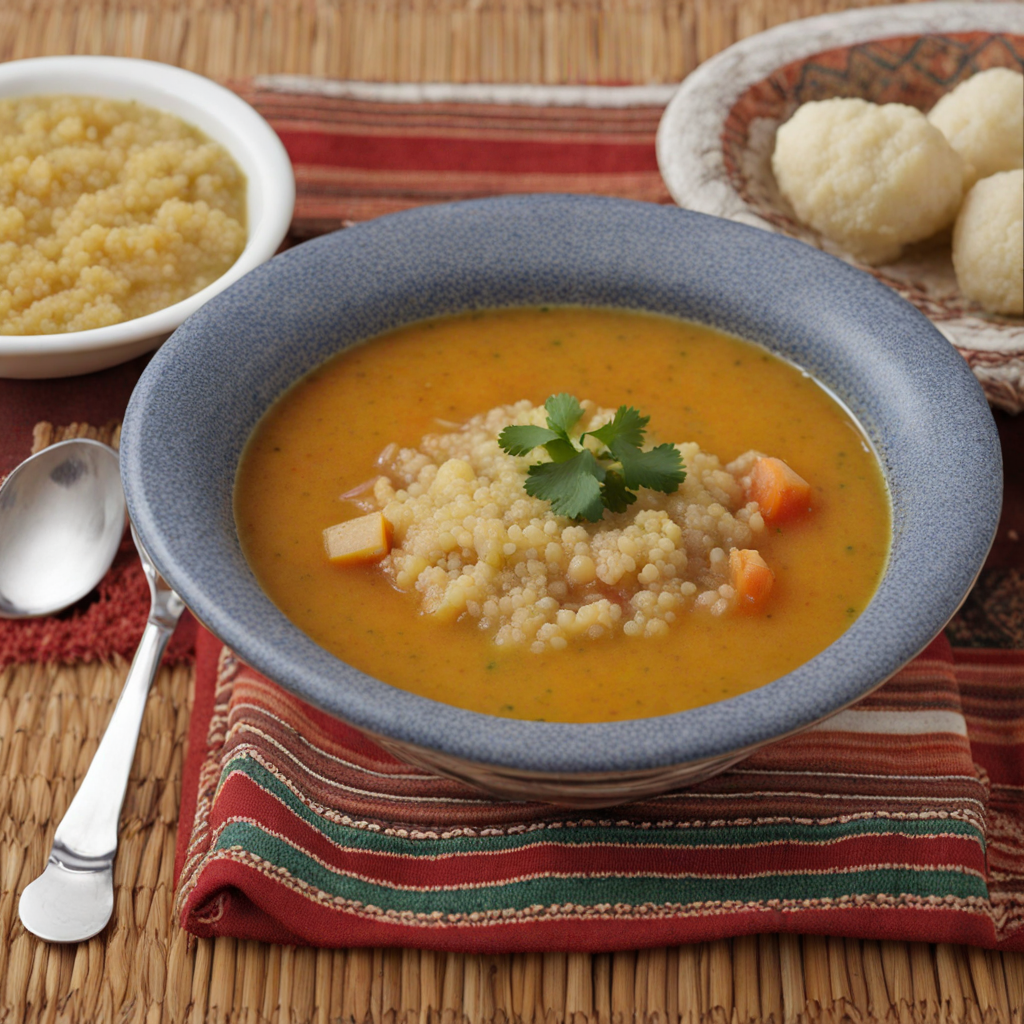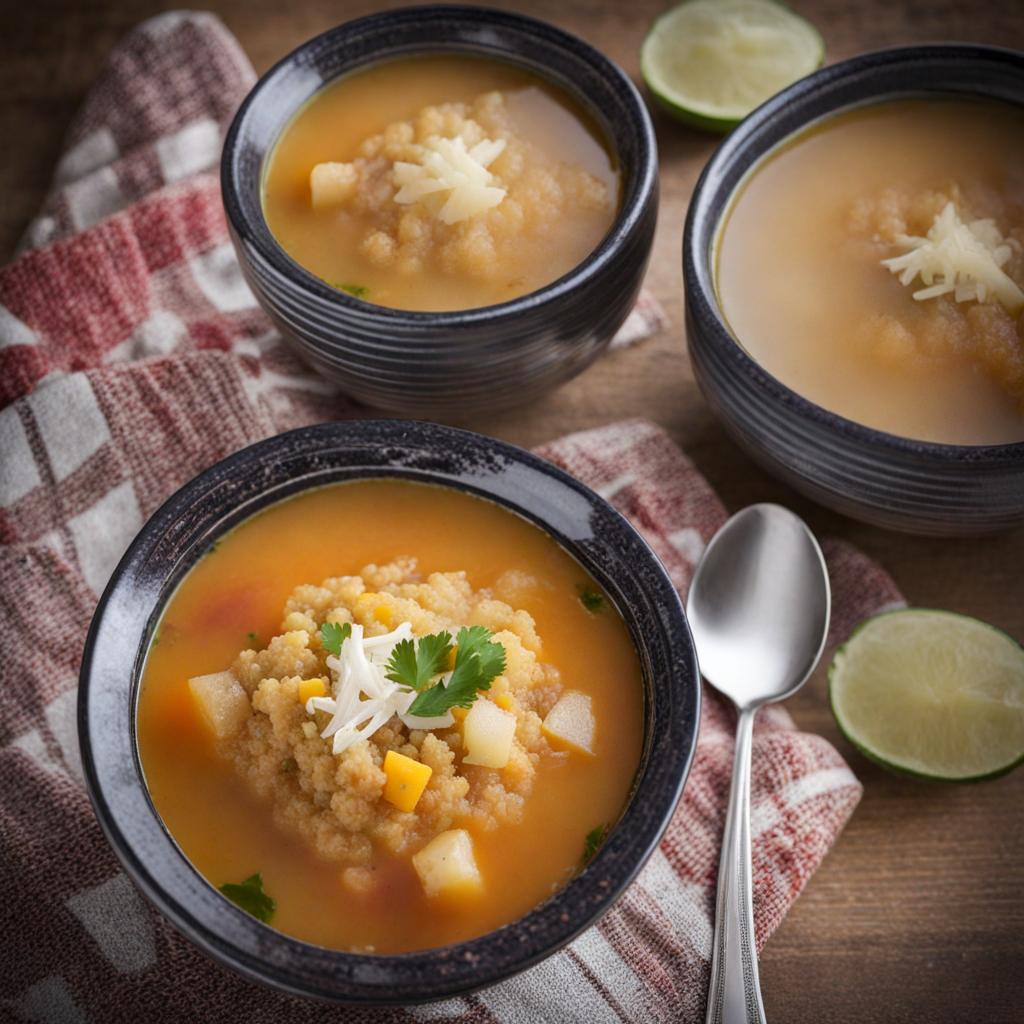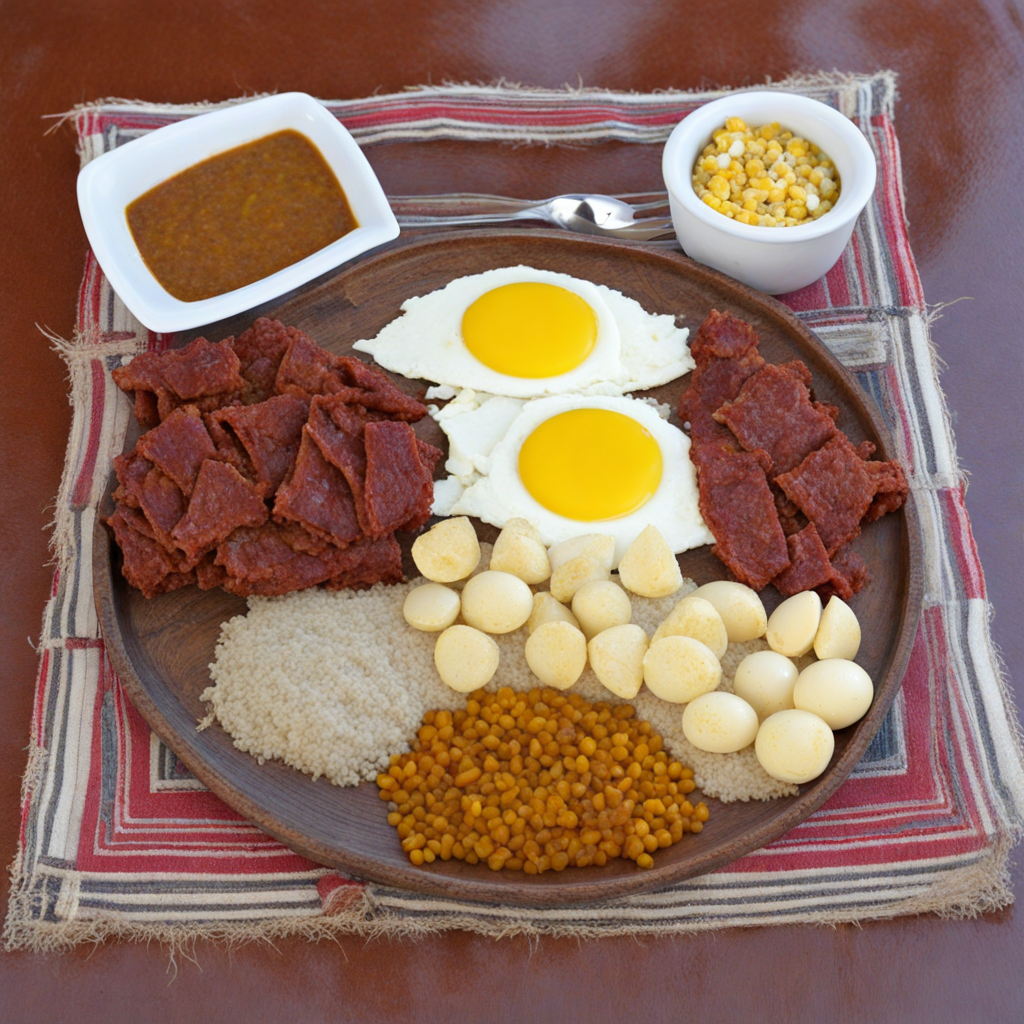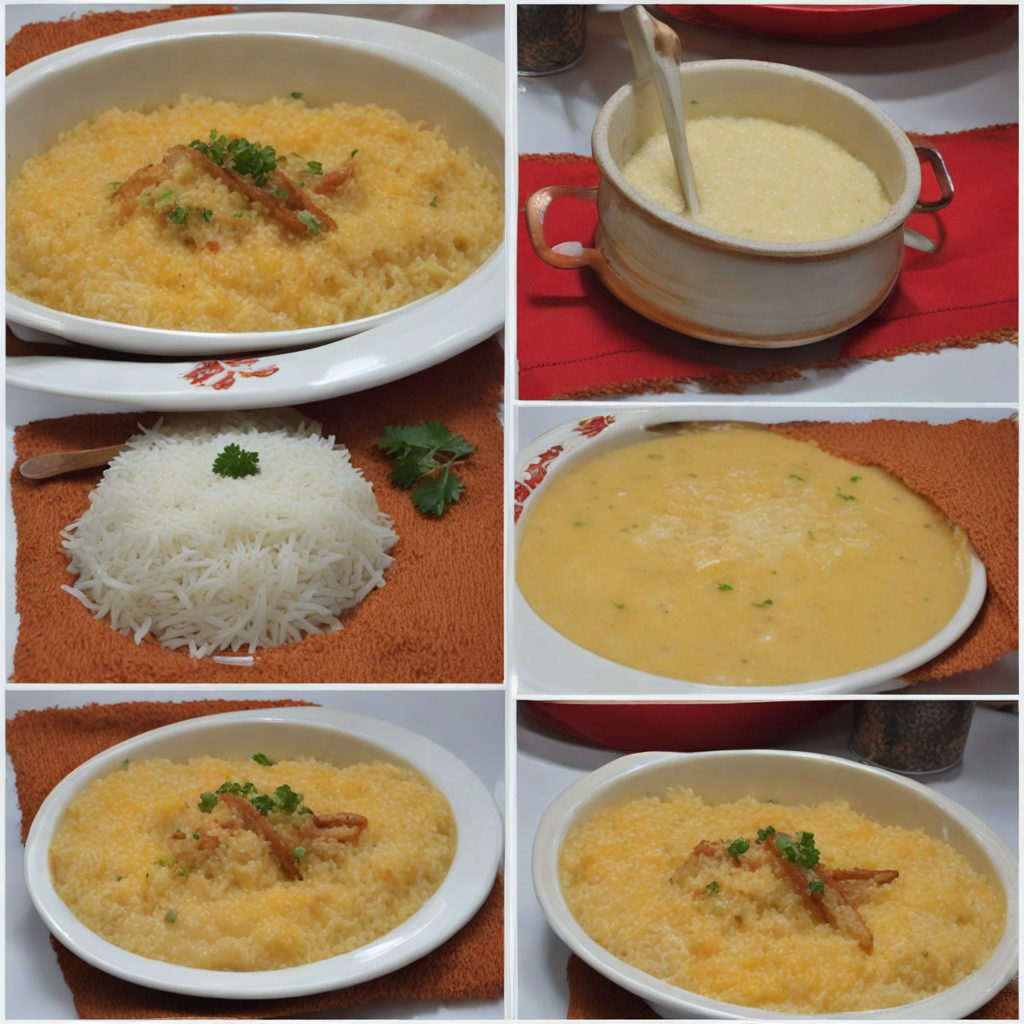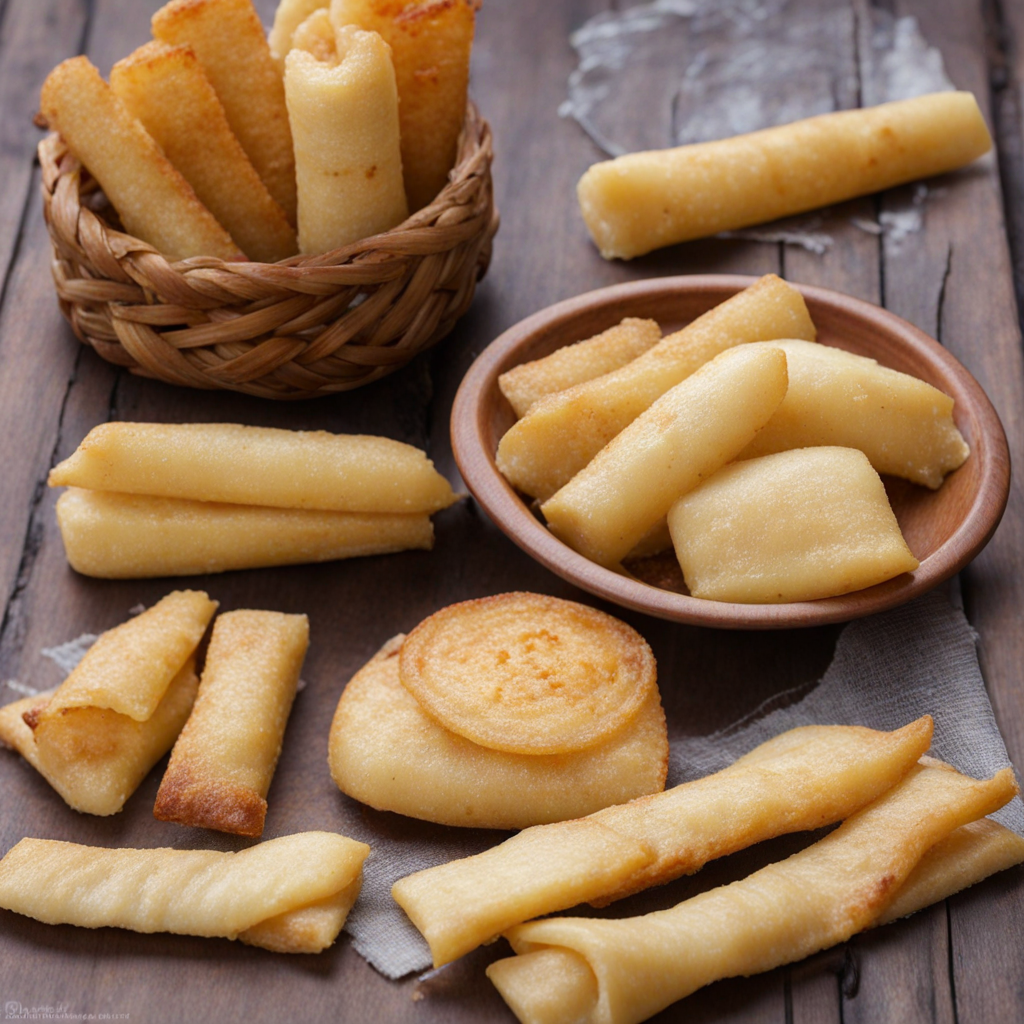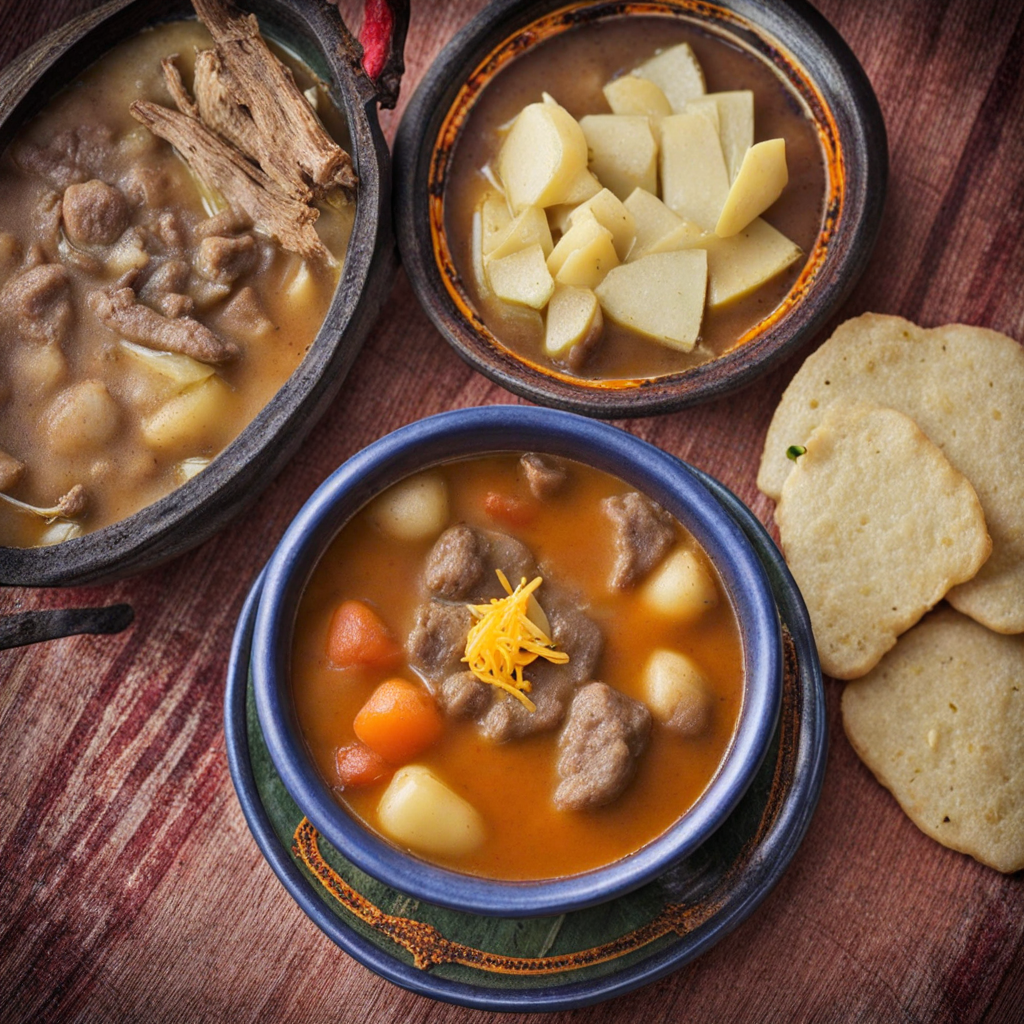Chairo de Quinua
Chairo de Quinua is a traditional Bolivian dish that beautifully embodies the rich cultural heritage and agricultural bounty of the Andean region. This hearty soup is primarily made with quinoa, a nutritious grain that has been cultivated in the Andes for thousands of years. The dish typically begins with a flavorful broth, often created from a base of beef or chicken, enriched with a medley of spices and herbs such as cumin and oregano, which infuse the soup with warmth and depth. The quinoa, when cooked, adds a delightful nutty flavor and a unique texture, making it a satisfying and wholesome meal. The vibrant colors of the ingredients bring life to the dish. In addition to quinoa, Chairo de Quinua usually features an assortment of vegetables, including potatoes, carrots, and sometimes even green beans. These ingredients are not only visually appealing but also contribute to a well-rounded flavor profile, enhancing the natural earthiness of the quinoa. Some variations of the dish may include local favorites like chuño (dehydrated potato) or even pieces of tender beef, creating a robust and filling soup that is perfect for any time of the year. What truly sets Chairo de Quinua apart is its ability to offer a comforting and nourishing experience, making it a staple in Bolivian households. The combination of quinoa, fresh vegetables, and rich broth creates a symphony of flavors that is both familiar and exotic to those exploring Bolivian cuisine. Each spoonful not only reflects the essence of the Andean landscape but also tells a story of tradition, community, and the simple joy of sharing a meal. For anyone looking to discover a new taste, Chairo de Quinua is a delightful introduction to the vibrant flavors of Bolivia.
How It Became This Dish
The Rich History of Chairo de Quinua: A Bolivian Culinary Gem Origins Chairo de Quinua, a hearty and nutritious soup from Bolivia, embodies the intersection of indigenous agricultural practices, cultural traditions, and the natural bounty of the Andean highlands. The dish's history is deeply rooted in the culinary heritage of the Aymara and Quechua peoples, who have inhabited the altiplano regions of Bolivia for thousands of years. The key ingredient in Chairo is quinoa, a grain-like seed that has been cultivated in the Andes for over 5,000 years. Quinoa's significance transcends mere sustenance; it was considered sacred by the Incas, who referred to it as "chisaya mama," or "mother of all grains." This reverence is reflective of the indigenous peoples' holistic relationship with their environment, where food is not only a source of nourishment but also a cultural touchstone. Cultural Significance Chairo de Quinua is more than just a meal; it is a symbol of identity and resilience for Bolivians, particularly those living in rural areas. Traditionally prepared in a communal setting, Chairo reflects the Andean values of community and sharing. The process of making the soup often involves family and friends gathering to prepare and enjoy the dish together, reinforcing social bonds and cultural ties. The dish is particularly popular during festive occasions and religious celebrations, where it is often served as part of a larger meal. For many Bolivians, Chairo holds nostalgic value, evoking memories of family gatherings and cultural traditions passed down through generations. In this way, the soup serves as a culinary bridge between the past and present, connecting individuals to their heritage while also nourishing the body. Ingredients and Preparation Chairo de Quinua is a versatile dish, and its ingredients can vary based on regional availability and personal preferences. The basic elements typically include quinoa, potatoes, meat (often lamb or beef), vegetables such as carrots and peas, and a flavorful broth seasoned with herbs and spices. The inclusion of chuño, a freeze-dried potato product, showcases the ingenuity of indigenous food preservation methods, allowing the dish to maintain its nutritional value even in the harsh conditions of the Andean climate. The preparation of Chairo is a labor of love. The quinoa is rinsed and cooked until fluffy, while the meat is slow-cooked to tender perfection. The vegetables are added to the pot, creating a colorful medley that is both visually appealing and rich in nutrients. Finally, the dish is seasoned with a blend of spices that may include cumin, garlic, and coriander, each contributing to the soup’s depth of flavor. Evolution Over Time As Bolivia has modernized and globalized, so too has the culinary landscape surrounding Chairo de Quinua. While traditional recipes still hold a place of esteem, contemporary culinary trends have introduced new interpretations of the dish. Chefs around Bolivia are experimenting with Chairo, incorporating international ingredients and flavors while maintaining its core components. This evolution reflects the dynamic nature of Bolivian cuisine, where traditional and modern influences coexist. In urban centers like La Paz and Santa Cruz, Chairo has found its way onto restaurant menus, often presented in a more refined manner yet still honoring its rustic roots. Modern variations may include gourmet touches, such as artisanal quinoa or the addition of exotic spices, appealing to both locals and tourists who seek an authentic taste of Bolivia. Furthermore, the global health movement has revived interest in quinoa, elevating its status as a superfood. As more people recognize its nutritional benefits, Chairo de Quinua has gained popularity beyond Bolivian borders. It is now featured in international culinary festivals and food blogs, showcasing the dish as an emblem of Bolivian culture and the broader Andean food heritage. Culinary Challenges and Resilience Despite its rich history and cultural significance, Chairo de Quinua and the quinoa industry face challenges in the modern world. The increasing global demand for quinoa has led to rising prices, affecting local farmers who rely on this crop for their livelihoods. Additionally, the commercialization of quinoa has raised concerns about sustainability and food security in Bolivia, prompting discussions about how to balance traditional agricultural practices with modern economic realities. In response, many Bolivians are advocating for the preservation of traditional recipes and practices, emphasizing the importance of maintaining cultural identities in the face of globalization. Local initiatives aim to educate communities about the value of quinoa and promote sustainable farming practices that benefit both the environment and local economies. Chairo Today: A Culinary Legacy Today, Chairo de Quinua stands as a testament to Bolivia's rich culinary heritage and the enduring spirit of its people. It is a dish that not only nourishes the body but also nourishes the soul, embodying the stories, traditions, and values of the Andean communities. Whether enjoyed in the warmth of a family kitchen or presented in a trendy restaurant, Chairo remains a beloved staple of Bolivian cuisine. As Bolivia continues to navigate the complexities of modernity, Chairo de Quinua serves as a reminder of the importance of cultural preservation and the power of food to unite communities. The soup is not merely a dish; it is a vessel of history, a celebration of identity, and a delicious embodiment of the resilience of the Bolivian people. In conclusion, Chairo de Quinua is more than a culinary delight; it is a living narrative of Bolivian heritage, reflecting the intricate tapestry of culture, agriculture, and community. As it evolves and adapts to contemporary tastes, it remains a cherished dish that connects generations and celebrates the enduring legacy of the Andean peoples. Whether savored in a bustling city or a quiet village, Chairo continues to tell the story of Bolivia, one bowl at a time.
You may like
Discover local flavors from Bolivia


